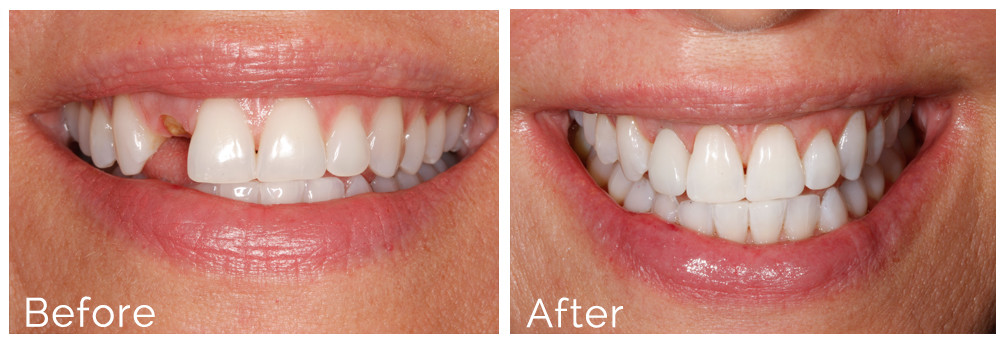Not known Details About Dental Sense
Not known Details About Dental Sense
Blog Article
Excitement About Dental Sense
Table of ContentsThe smart Trick of Dental Sense That Nobody is DiscussingLittle Known Questions About Dental Sense.Dental Sense - An OverviewUnknown Facts About Dental Sense
are medical devices surgically implanted right into the jaw to bring back an individual's ability to eat or their appearance. They give support for fabricated (phony) teeth, such as crowns, bridges, or dentures. When a tooth is lost because of injury or disease, an individual can experience problems such as fast bone loss, defective speech, or modifications to eating patterns that lead to discomfort.Dental dental implant systems contain a dental implant body and dental implant abutment and might additionally consist of a joint fixation screw. Cosmetic dentistry services. The dental implant body is surgically put in the jawbone in place of the tooth's root. The dental implant abutment is usually affixed to the dental implant body by the abutment addiction screw and expands with gum tissues into the mouth to support the connected fabricated teeth
(https://dentalsense1.creator-spring.com)Framework of The Dental Implant System choosing oral implants, speak to your oral provider about the prospective advantages and dangers, and whether you are a candidate for the procedure. Things to think about: Your general health is a crucial consider figuring out whether you are a great candidate for oral implants, for how long it will require to recover, and how long the implant may remain in place.
Cigarette smoking may impact the recovery procedure and reduce the long-term success of the dental implant. The recovery procedure for the implant body may take a number of months or longer, throughout which time you commonly have a momentary joint instead of the tooth. the oral implant treatment: Meticulously follow the dental hygiene instructions provided to you by your dental company.
See This Report on Dental Sense
Implant failing can cause the need for an additional operation to take care of or replace the implant system. Recovers the capacity to chew Brings back aesthetic appearance Aids maintain the jawbone from shrinking as a result of bone loss Maintains the health of the bordering bone and gums Helps maintain adjacent (close-by) teeth steady Boosts high quality of life Damage to surrounding natural teeth throughout implant placement Injury to the surrounding cells throughout surgical treatment, such as sinus opening Injury during surgical treatment (for instance, crack of bordering jawbone) Inadequate function, such as feeling like the teeth do not bite with each other normally A feeling that the tooth hangs or turning in position arising from a joint screw loosening Implant body failing (looseness of the dental implant body) as a result of systemic infection, which may be most likely in patients with uncontrolled diabetics issues as a result of neighborhood infection in bone and gum tissues sustaining the implant body due to delayed recovery, which might be more probable in patients that smoke Difficulty cleansing the gums around the implant, leading to poor oral hygiene Without treatment periodontal disease Post-surgical pins and needles because of nerve impingement or damage Always inform healthcare service providers and imaging specialists that you have dental implants prior to any kind of magnetic vibration imaging (MRI) or x-ray procedures.
FDA is not mindful of any unfavorable occasions reported for MRI or x-ray treatments with dental implants. Dental implants systems are commonly constructed from materials that follow global agreement requirements of the International Organization for Standardization (ISO) or ASTM International. These requirements have details of what makes a safe product.

A dental implant is a structure that replaces a missing out on tooth. With screw-like devices, the specialist inserts an implant into the jawbone, and it acts as a support for a fabricated tooth, called a crown. A device called a joint connects the fabricated tooth to the dental implant. description The crown is personalized to fit the individual's mouth and match the color of their teeth.
5 Easy Facts About Dental Sense Shown
Some people are not qualified for oral implant surgery. It is for dental specialists to run on individuals with: severe illnessuncontrollable metabolic diseasebone or soft cells illness or infectionIf these problems are resolved, a person can have the surgical treatment. In, oral specialists avoid from operating people with: If individuals with any of the above undergo dental implant surgical procedure, there is a greater danger of the dental implant failing.

Oral dental implant surgical treatment is an individualized process. It's not the very same for everyone. The adhering to provides a basic summary of what you can expect your dental practitioner, oral doctor, periodontist or prosthodontist to do: Put the implant surgically. Offer you time to heal. Connect the article and last crown, bridge or denture.
Next off, your surgeon will very carefully position the oral implant into your jaw. If your implant is near the front of your mouth, your dental practitioner will certainly make a short-lived tooth for you to put on till you recover.
Dental Sense Fundamentals Explained
Your copyright can tell you what to expect in your situation. Throughout the healing stage, your jawbone must fuse to the oral implant. This procedure, called osseointegration, is important for stability and long-term success. This process can take anywhere from 3 to nine months. In many cases, it may take much longer.
Once your implant heals, your dental practitioner can affix the abutment (small connector blog post) and your last remediation (crown, bridge or denture). This generally takes about one hour to finish and might call for a 2nd small surgical treatment. You should not feel any kind of discomfort throughout your oral implant procedure since your service provider will certainly utilize medicine to numb your gum tissues.
Report this page